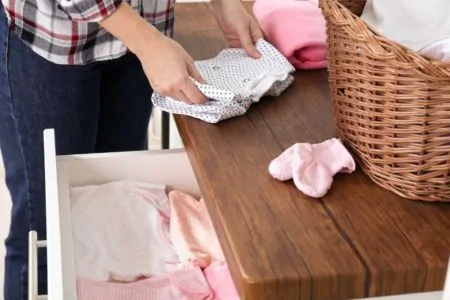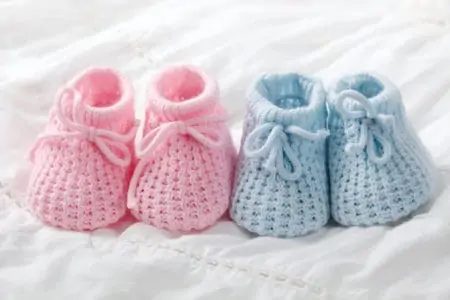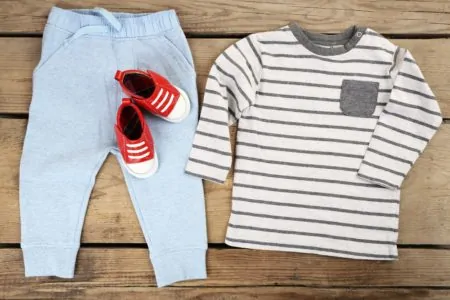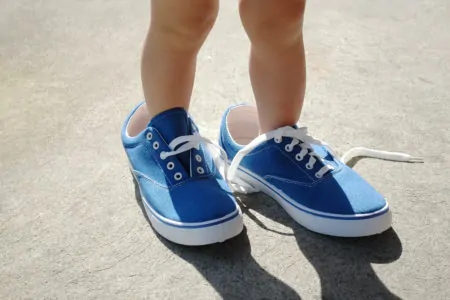Is laundry day something you dread every week? We don’t blame you. It seems like it’s a constant cycle of wash, dry, and fold. In fact, I’m listening to my washer and dryer run as I write this.
I used to hate folding and putting away baby clothes. It just seemed like another thing on the never-ending to-do list of motherhood. But I found a system that works for me, and it’s made the process much better. I would even call it therapeutic.
If this is something you struggle with, you’ve come to the right place. We’ll discuss how to fold baby clothes and share our techniques to make the process easier for anyone feeling overwhelmed.
Key Takeaways
- Use the KonMari method for folding baby clothes to save space and keep them organized.
- Follow general rules for KonMari folding: clean flat surface, flatten garments, make sure they stand on their own, and use dividers for small items.
- Fold onesies, shirts, pants, sleepers, socks, and underwear using specific KonMari techniques for each garment type.
- Consider alternative folding methods and storage solutions like roll-up folding, over-the-door storage, and hanger dividers for more organization options.
Folding Techniques: KonMari vs. Traditional
If you ask any number of moms how they fold their baby clothes, chances are you’ll get varying answers. Some moms go full-on “KonMari” and have a super organized dressing area for their child. Others may do a quick foldover to get the job done.
Before we show you how to fold baby clothes, let’s compare these methods.
1. The KonMari Method
This technique was developed by Marie Kondo and focuses on organization that “sparks joy” (1).
This method follows six rules:
- Commit to the idea of tidying up.
- Imagine how you want to live.
- Finish discarding items before organizing.
- Tidy by category rather than location.
- Follow the correct order.
- Ask yourself if an item sparks joy.
When it comes to clothing, the KonMari method uses a folding technique that allows the folded garment to stand straight up. This is also known as the “filing” method and makes them more easily accessible and organized.
Many parents (and people in general) prefer this folding style over the traditional technique. This is because they can see everything they own. The folding process is slightly different when folding baby clothes rather than your own.
I love folding my kid’s clothes this way, as it makes getting ready in the morning much faster.
Editor's Note:
Jennifer Schlette, MSN, RN2. Traditional Folding
This is probably the folding method you’re used to, where clothing is stacked on top of each other in separate drawers. It’s quick and easy.
But it proves impractical when you have to pick up a bunch of other clothing just to find what you want. It can be inconvenient if you can’t find the right shirt to wear without tearing your drawers apart.
We like the KonMari method more because it makes clothing easier to access. Plus, seeing everything at once prevents your child from growing out of something before they can wear it.
However, if you have higher-up shelves, like in a closet, the traditional method can still be effective. Instead of the clothing standing straight up, you can stack clothes on those shelves so you can see each piece.
How to KonMari Fold According to Garment
For every kind of garment, there’s a special way to fold it for storage via the filing method. Each article of clothing has its own unique fold.
There are a few general rules of thumb when folding the KonMari way:
- Make sure to have a clean, flat surface handy: This will make folding much easier. You’ll have space to spread out and do it properly.
- Flatten the garment as you fold: This will prevent you from having a bulky end product; it may also help prevent wrinkling.
- The end product should be able to stand on its own: You’ll find that clothing folded via the KonMari method is folded into thirds for this reason. Since you’ll be storing it vertically, the stand-up test will ensure it fits right in the drawer.
- Leave an inch or two of space at the top: This will also help ensure the product stands on its own.
- Organization is key: The point of folding this way is to have a more organized drawer. Marie Kondo recommends getting drawer dividers or small boxes to store things like socks and underwear. Having dividers will keep them from getting mixed together or lost.
1. Onesies
To fold a onesie KonMari style, start by laying it flat. Then fold it inward lengthwise, on each side, and tuck the sleeves in. Flatten the onesie again with your hands to smooth out any bumps or wrinkles.
Next, fold the onesie into thirds, starting at the bottom. Ensure the folds are even and clean. This will allow you to place the onesie in the drawer standing straight up, which takes up minimal space.
2. Shirts
When folding a shirt, start by folding one side of the shirt over. Take the shirt sleeve and fold it back over the folded panel you just made. Repeat with the other side.
Flatten the shirt to smooth out any wrinkles, then fold it in half, leaving a little gap at the end. Fold the shirt into thirds, and then it’s ready to be put away.
You can fold hooded sweatshirts the same way. The only extra step is to fold the hood over after you fold the arms in.
3. Pants
To fold pants with the KonMari method, simply lay the pants flat and fold one leg over the other. Make sure the crotch is tucked in, then fold the pants almost in half, leaving a little space at the top.
Fold the pants over three times from the bottom upward to give them the dimension they need to stand straight up.
4. Sleepers
Sleepers, or footie pajamas, seem intimidating to fold, but they actually aren’t. Lay the PJs flat with the legs touching, and start by folding the sleeves in. You’ll then bring the two feet up until they’re almost folded in half.
Fold the whole thing over twice to make a trifold, and it’s ready to be placed in the drawer.
5. Socks
While many people fold socks by folding one over the other, there is a much more efficient way of doing it. Folding socks over each other can stretch out the ankle and ruin the fit. To fold socks the KonMari way, simply place one sock on top of the other and fold them in half.
Place them in a divider box in your baby’s sock drawer.
6. Underwear
If you’re currently potty training your little one, you may be wondering how to fold those tiny pairs of underwear. Folding underwear with the KonMari method is simple.
Start by laying the underwear flat. Fold the bottom part up to make a long skinny rectangle. Then fold them in half twice to make a little square. That’s all there is to it.
Other Hacks for Folding Baby Clothes
As much as we like the KonMari method, we recognize that people may prefer a different technique. Furthermore, what about the items that are just plain weird to fold?
- Shirt/onesie roll-up: The roll-up method is another effective way to fold baby clothes. For shirts and onesies, simply fold in the sleeves and roll the garment into a cylinder.
- Pants roll-up: To roll up pants, fold them in half, and tuck in the crotch. Then roll the pant legs from the bottom up into a cylinder.
- Bib roll-up: Baby bibs can be awkward to fold. Some people stack them on top of each other. However, you can roll these up by folding the neck strap down and rolling to finish.
- Hanger bags for bulky items: To save closet space, you can get hanger bags for bulky items like coats and snowsuits. These will compress the fabric and make them more space-efficient for storing.
- Use over-the-door storage: Over-the-door storage is a good option for things like socks, mittens, and hats. Use this for any item that’s weird to fold.
- Hanger dividers: To find things more easily in your baby’s closet, consider getting hanger dividers. You can separate things by size, season, or type of garment for easier organization.










